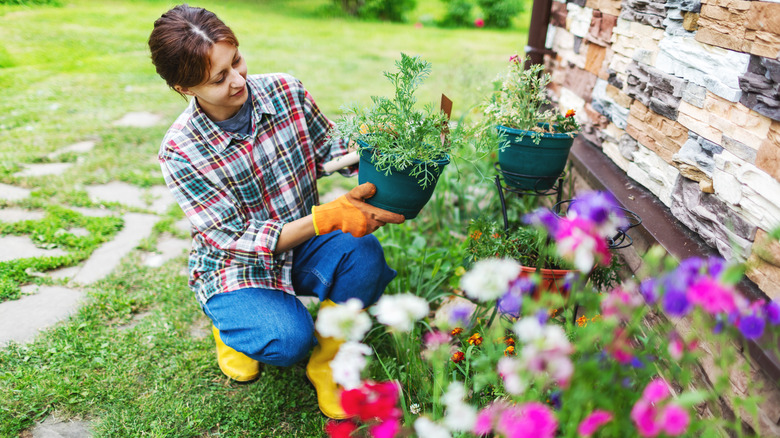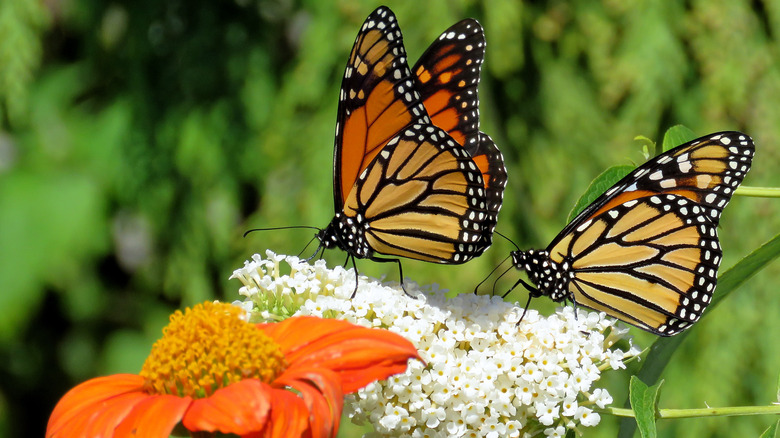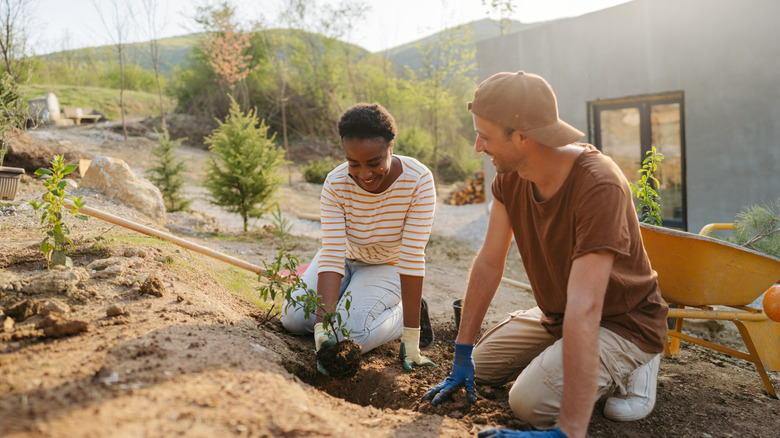The Plants Set To Dominate Gardens In 2024, According To Our Gardening Expert
After the winter frost comes the spring garden! But before the April showers bring May flowers, we have to do some planting. Jessica Zander, garden coach and founder of You Can Do It Gardening, spoke exclusively to House Digest on which plants are set to dominate in 2024. It turns out biodiversity is in, and people acknowledge how perfectly manicured lawns harm the ecosystem, opting instead for plants that will help their local wildlife.
"More clients are coming to me wanting advice about starting pollinator gardens and adding native plants," Zander shared. "More people are recognizing how connected we are to our local ecosystems, starting right in our backyard." There is a movement to embrace native foliage and pollinator plants. Sewing the right greenery and flowers can help the environment while bringing majestic creatures straight to your home. Zander shared how to do it successfully and which pollinator plant is expected to top the must-have list.
You'll see a lot of pollinator gardens and native plants this spring
Pollinator gardens are increasing in popularity, according to Jessica Zander. And there is one plant in particular she believes we'll see more of. "With recent news about a dramatic decrease in the monarch butterfly population I expect particular interest in milkweed," Zander said. "Some varieties can be quite large and unwieldy but there are smaller varieties." White milkweed (Asclepias variegata), whorled milkweed (Asclepias verticillata), and antelope-horns milkweed (Asclepias asperula) are some of them that typically don't surpass 3 feet, unlike other varieties that can tower up to 8 feet tall. However, it's important to plant milkweed indigenous to your area.
Native gardens are also seeing an uptick. Native plants are species that naturally grow in your region, and local wildlife depends on them. This group of trees, flowers, and greenery will look different across the nation, and that's the amazing thing about nature. You can enter your zip code into a native plant database to find what species thrive and are indigenous to your area. With native and pollinator gardens, "you can actually see and hear the biodiversity increasing," Zander said. Your backyard can turn into the perfect place to birdwatch or catch fireflies with all the wildlife it can attract. To keep your plants flourishing, Zander gave House Digest exclusive tips on how to care for your garden.
How to care for pollinator gardens and native plants
In an exclusive interview with House Digest, plant expert Jessica Zander explained there are four things to look out for when starting your garden: spacing, light, water, and soil. Those seedlings don't stay tiny forever, and to avoid buying too many plants or constantly pruning, you need to space them properly. Consider their expected size at maturity before planting them near borders and other foliage. Also, pay attention to the plants' sunlight needs. The full sun or partial shade notes aren't suggestions but requirements for the flora to flourish. Get plants that are compatible with your space.
When it comes to watering, Zander has a trick for keeping the plants hydrated, "Put your finger down an inch or so in the soil and assess: if it's dry to the touch, you need to water more. If it's moist, you can hold off." Lastly, ensure your soil provides your pollinator and native plants with enough nutrients. "I often suggest adding compost to existing beds and when planting," Zander shared. "If you are able to leave some leaves and as much organic material as possible around your plants, your soil will improve and they will be healthier." So it's okay to miss a few spots when you rake. In fact, it's gardening expert-approved.


